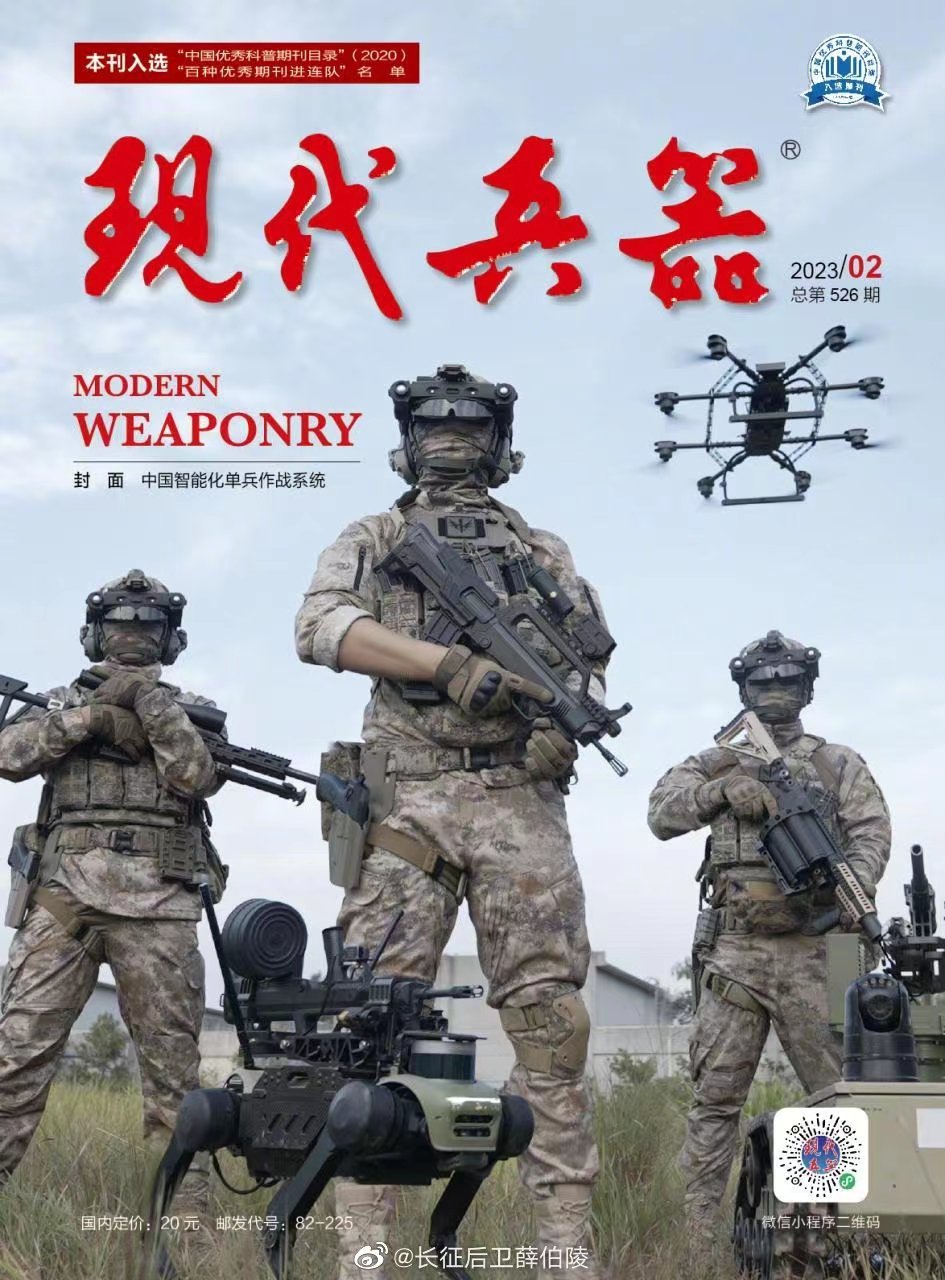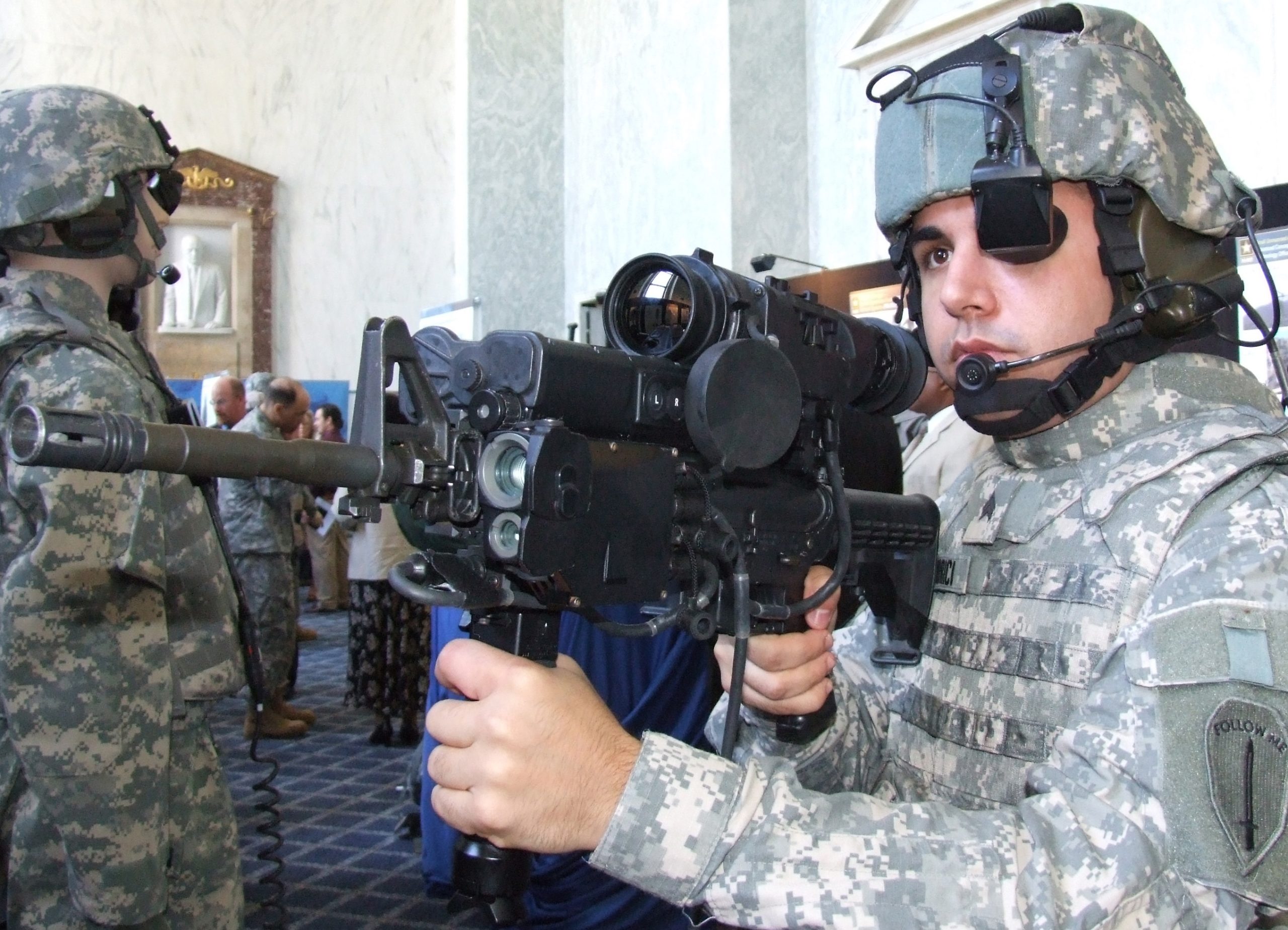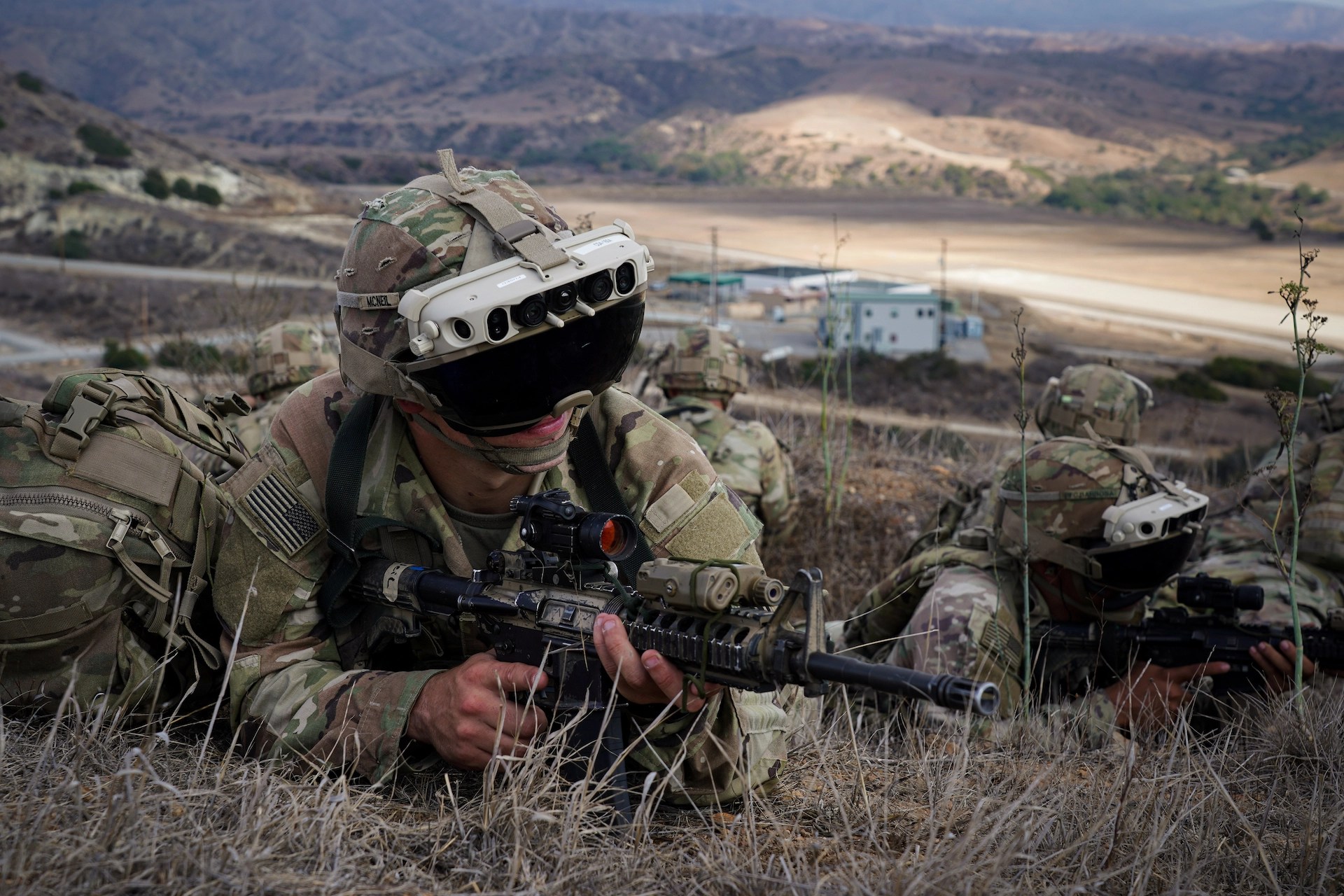China’s People’s Liberation Army (PLA) soldiers were seen using a wearable heads-up display and shooting their rifles around corners by accessing the sighting system view on their visors, in a different form of a ‘corner shot’ system.
Featured on a promotional news feature by its military-affiliated media and a defense technology publication, the system is helpful but still risks going the way of two such programs by the US Army that did not fare well technologically and financially.
Called Augmented Reality systems, those devices are like the land-based versions of the helmet-mounted displays worn by fighter pilots that project all the flight information and data on the visor.
But the Chinese video also showed the AR systems double up as a ‘corner shot’ weapon, where the firer can have the gun sight’s perspective on his eyes, opening up a host of possibilities for flexible shooting.
The New Corner Shot?
The video shows Chinese infantrymen – possibly special operations personnel – loading the magazines of their QBZ-95 standard assault rifles.
After firing a few rounds off their pistols and rifles, the soldiers are seen wearing different visors under their helmets. One soldier peeps out the gun from the corner and shoots over and around an obstacle. This indicates that the gun’s digital targeting reticule view can also be seen on the AR goggles.
This ‘corner shot’ mode is vastly different than the one invented by retired Israeli Defense Forces (IDF) Lt Col Amos Golan, which required manipulating a lever on a large adapter kit that accommodated a pistol. This was to turn it in various directions.
A pop-out screen in the other half of the kit transferred images from the optical sight connected to the pistols. It found instant utility in counter-terrorism, hostage rescue, and urban warfare scenarios and was adopted by many security and police agencies worldwide.
However, the Chinese AR system looks more flexible in terms of allowing a larger weapon, like an assault rifle, that fires a bigger round. Moreover, installing the gun does not require an adapter kit, making quick target acquisition easy.
Whether the system is exclusively meant for shooting around corners or is a larger information-sharing device that connects the shooters to drones, command and control centers, and drones is unknown. But it is unlikely that even if it is a testing prototype, China will use one only for ‘corner shooting.’

Expert Speak
Col. Bipin Shinde (retd) agreed the system has its advantages. “Various combinations of information, from battlefield radars, drones, UAVs, satellite imagery, can be fed to the head-up display.” But he also warns of “information overload,” mainly if not correctly structured, “which may become a hindrance.”
“Also, over-dependence on AR systems might completely disrupt functioning if it is destroyed or malfunctions,” he adds. The Chinese system might be a testing prototype, not a final design, just sent to operational units for feedback.
US’ Overly Advanced System That Overwhelmed Soldiers
Previous attempts at a heads-up display (HUD) for infantrymen in the US Army have failed spectacularly. The Integrated Augmented Display, part of the Future Warrior/Land Warrior program, was sent to soldiers in Iraq and Afghanistan in 2007 – and the units hated it.
Weighing 7.7 kgs (17 pounds) alone, the units cited disorientation, mobility, equipment space requirements, clumsy cables, weapon sighting, and technical issues.
The system had devices that offered soldiers more information about their environments, shared data with their squad members, tactical commanders, and other assets, and beamed onto headset visors and eyepieces.

This is not to mention the obscene costs involved in the project. From 1989 when it was launched, till 2009, the amount invested in its development had jumped to $3.5 billion.
Later rebranded as the Objective Force Warrior Program, the fielding date for the system was expected to be 2015, but nothing was reported even until a year later in 2016. There are estimates that the cost must have doubled to nearly $7 billion – enough to buy 31 units of the F-35C, the stealth fighter’s most advanced variant, pegged at around $117 million a plane.
But it doesn’t end here. The technology is now being pursued as the Integrated Visual Augmentation System (IVAS) program, promising not to repeat the mistakes of the Future Warrior and Land Warrior projects.
Its promise is a fundamentally new approach, with the system’s provisions being informed more by the soldier than technologists. “IVAS is the result of coders and soldiers working together without any bureaucratic requirement…making military adaptations in record time,” said an article on Breaking Defense.

IVAS was born out of Microsoft’s HoloLens technology, adapted for military purposes. A Pentagon report suggested that infantrymen disliked the system and would prefer to ditch it.
Director of Operational Test and Evaluation Nick Guertin, in his evaluation for the Department of Defense (DoD), said, “More than 80% (of the soldiers experienced) headaches, eyestrain, and nausea (within) three hours of using the customized version of Microsoft’s HoloLens goggles.” IVAS costs $21.9 billion, required to provide 120,000 devices over ten years.
- The author can be reached at satamp@gmail.com
- Follow EurAsian Times on Google News




